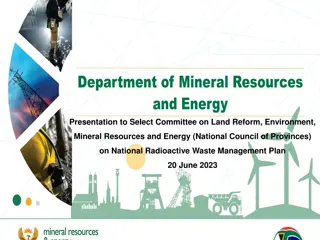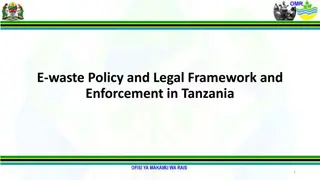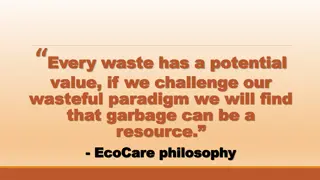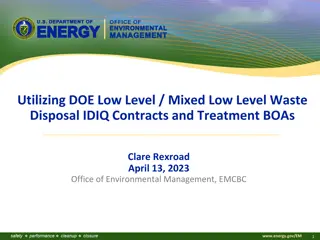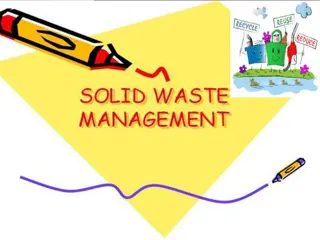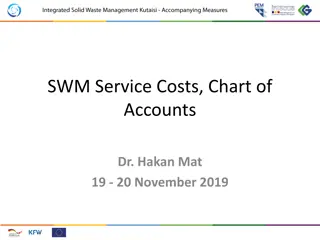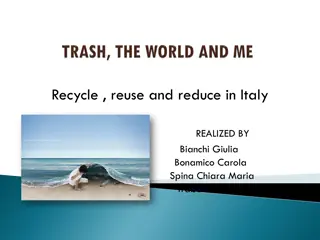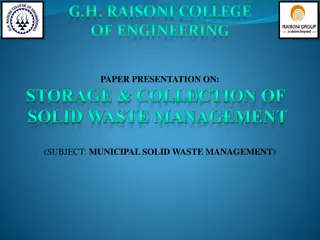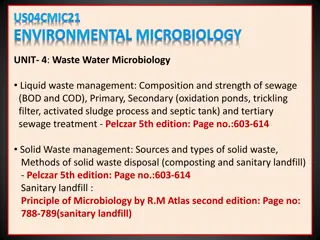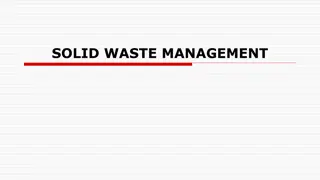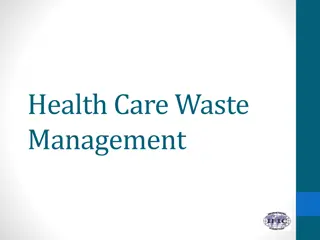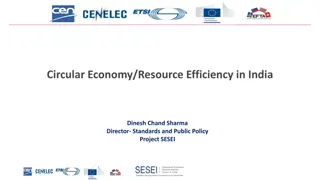OVER DIAGNOSIS: REDUCING WASTE AND ENHANCING QUALITY
Analyze the production function of health, evaluate the seven wastes of healthcare, apply health economic principles to waste reduction, and implement Lean Six Sigma principles for waste reduction. Explore Grossman's theory of diminishing returns and the physician's dilemma when providing healthcare services.
Download Presentation

Please find below an Image/Link to download the presentation.
The content on the website is provided AS IS for your information and personal use only. It may not be sold, licensed, or shared on other websites without obtaining consent from the author.If you encounter any issues during the download, it is possible that the publisher has removed the file from their server.
You are allowed to download the files provided on this website for personal or commercial use, subject to the condition that they are used lawfully. All files are the property of their respective owners.
The content on the website is provided AS IS for your information and personal use only. It may not be sold, licensed, or shared on other websites without obtaining consent from the author.
E N D
Presentation Transcript
OVER DIAGNOSIS: REDUCING WASTE AND ENHANCING QUALITY
SESSION OBJECTIVES OBJECTIVES 1. ANALYZE THE PRODUCTION FUNCTION OF HEALTH HEALTH AS A PRODUCTION FUNCTION 2. EVALUATE THE SEVEN WASTES OF HEALTHCARE 3.APPLY HEALTH ECONOMIC PRINCIPLE S to WASTE REDUCTION 4.APPLY LEAN SIX SIGMA PRINCIPLES TO WASTE REDUCTION
PRODUCTION FUNCTION OF HEALTH
Grossmans Theory of Diminishing Returns
Grossmans Theory of Health Investment Production of Healthy Days Health is a productive good which produces healthy days Greater health stock leads to more healthy days however with diminishing returns Hminis health stock minimum production of healthy days at this point is zero i.e. death Natural Maximum of 365 days
At POINT X, MORE and MORE INPUTS MAY NOT OFFER THE PATIENT BETTER HEALTH
A PHYSICIANS DILEMMA A 64 year old woman, Mrs G was rushed to the ER with a history of acute respiratory distress. Dr Mark was called to see and he noted that the patient was an old patient of the hospital s with metastatic bowel cancer. She was unresponsive and afebrile with tachycardia and a right lower lobe consolidation. She was admitted into the ICU and placed on life support. She soon developed renal failure and her children were divided concerning whether she should commence 24 hour dialysis or not. At this point Mrs G had spent 10 days in the ICU at a cost to the hospital of N500,000. The family was only able to pay 15% of the deposit at the point of admission. Does the Physician continue providing more services? This will require an additional 2 nurses and the services of a visiting nephrologist .
The principles of waste in healthcare In the case of Mrs G, adding MORE INPUTS in the form of SPECIALIZED medical care could be considered a waste from a health economics view point. WHY? Mrs G s health status would probably not improve because she had a very poor prognosis According to the law of diminishing returns Mrs G s health stock had depreciated to the point in which more inputs would probably not improve her output(stock of healthy days)
THE SEVEN WASTES OF HEALTHCARE
WASTE 1: ERRORS & DEFECTS Wrong blood , right patient Wrong Blood JUNE 9TH2013 An 84-year-old woman died after Coney Island Hospital mistakenly gave her a transfusion of the wrong blood type. Cost of litigation N100,000,000M Out of court settlements
REASONS FOR ERRORS: WHAT IS THE ERROR RISK HERE ?
ERROR NO 2: WHATS WRONG WITH THIS SCENARIO?
ERROR 3: NOVEMBER 2005- DIAGNOSIS OF BENIGN EXTRA- MAMMARY PAIN
Error 4: Whats likely to go wrong here?
WASTE 2:WAITING TIME- Exceeding 1 hour waits for cold cases
WASTE 3:TRANSFER/TRANSPORTATION TIMES: Waiting 72 hours or more for lab results from external labs
WASTE 4:OVER PRODUCTION: Delayed Discharge or excessive ICU care
WASTE 5: OVER DIAGNOSIS /OVER PROCESSING; ordering a CT SCAN to rule out acute appendicitis or kidney stones
WASTE 6: INVENTORY- High rates of expired drugs and over stocking
WASTE 7: PERSONNEL MOVEMENT
STRATEGIES for MANAGING WASTE EVALUATING PRODUCTION INPUTS OVER PAYING,UNDERPAYING & UNDER/OVER STAFFING ? EXAMINE YOUR PRODUCTION PROCESS WHAT ARE YOUR INPUTS? MANPOWER ? MATERIALS ? MACHINES ? METHODS ? How else can efficiency be improved?
TAKING A LOOK AT a 3 year OVER PRODUCTION EXAMPLE in a 20 bed hospital (CAPITAL IS FIXED) INPUTS (LABOUR) TOTAL MARGINAL HEALTH PRODUCTION MP OUT PUT FOR ONE ADDITIONAL UNIT 0 150 100 50 20 0 -20 AVERAGE HEALTH CARE PRODUCTION MEAN OUTPUT TP PRODUCTION No of patient visits/month No of hospital staff 75 Yr 1 85 Yr 1 90 Yr 1 100 Yr 2 150 Yr 2 180 Yr 3 200 Yr 3 600 750 850 900 920 920 900 8 8.8 9.4 9.0 6.1 5.1 4.5
The law of demand and supply
Excessive healthcare supply & manpower crashes the value of the care and the value of wages (GO for quality not quantity)
Did you know ? That at high wage levels medical personnel do LESS WORK? Grossman s LEISURE-LABOUR model 1.Medical staff especially doctors and pharmacists, allocate time between work and leisure 2. As income rises from BASELINE, medical staff will put in more labour hours eg substitution effect 3. As income increases to a threshold level, however, there is an income effect 4. After the income effect over rides the substitution effect, the medical employee will not increase his productivity DESPITE an increase in pay
QUALITY STRATEGY: POKA YOKE Tracking near misses and incidents
QUALITY STRATEGY: STANDARDIZATION
Quick quiz: Identify the Waste 1



